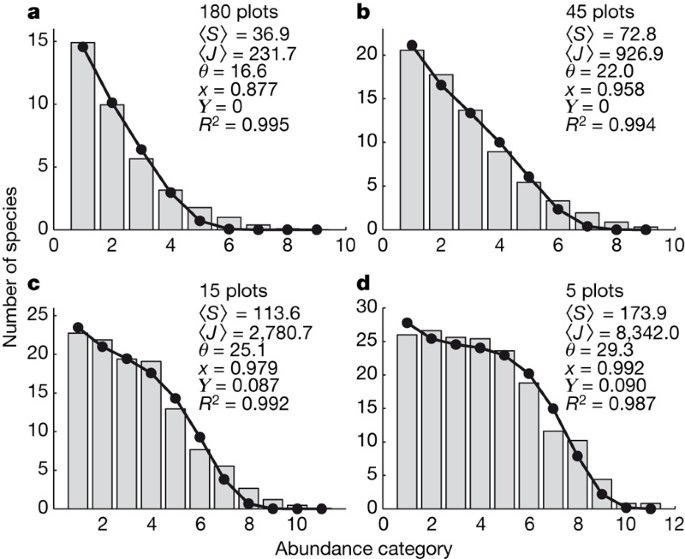
- Select a language for the TTS:
- UK English Female
- UK English Male
- US English Female
- US English Male
- Australian Female
- Australian Male
- Language selected: (auto detect) - EN
Play all audios:
A formidable many-body problem in ecology is to understand the complex of factors controlling patterns of relative species abundance (RSA) in communities of interacting species. Unlike many
problems in physics, the nature of the interactions in ecological communities is not completely known. Although most contemporary theories in ecology start with the basic premise that
species interact, here we show that a theory in which all interspecific interactions are turned off leads to analytical results that are in agreement with RSA data from tropical forests and
coral reefs. The assumption of non-interacting species leads to a sampling theory for the RSA that yields a simple approximation at large scales to the exact theory. Our results show that
one can make significant theoretical progress in ecology by assuming that the effective interactions among species are weak in the stationary states in species-rich communities such as
tropical forests and coral reefs.
We thank D. Alonso for bringing some key references to our attention and for spending an enormous amount of time in helping improve our paper. We thank D. Thomas, G. Chuyong and D. Kenfack
for the data from Korup National Park, Cameroon; R. Valencia, R. Foster and R. Condit for the data from Yasuni Natinal Park, Ecuador; S. Davies, S. Tan, J. LaFrankie and P. Ashton for the
data from Lambir Hills National Park, Sarawak; N. Supardi, P. Ashton and J. LaFrankie for the data from Pasoh Forest Reserve, Peninsular Malaysia; and Hubbell’s collaborators on the Barro
Colorado Island plot, R. Foster and R. Condit. We also thank S. Davies for directing and coordinating the global programs of the Center for Tropical Forest Science (CTFS), which manages the
plots, S. Loo for data management, and I. Rubinoff, Director of the Smithsonian Tropical Research Institute, the host institution of CTFS. The fieldwork has also received long-term support
from the John D. and Catherine T. MacArthur Foundation, the Mellon Foundation, Earthwatch, Frank Levinson and the Celera Foundation, and other private foundations and individual donors. We
thank S. Connolly, M. Dornelas and T. Hughes for sending us the coral-reef data. This work was supported by COFIN 2005 and by the NSF.
Department of Biology, Center for Infectious Disease Dynamics, The Pennsylvania State University, University Park, Pennsylvania 16802, USA,
Department of Ecology and Evolutionary Biology, The University of California, Los Angeles, California 90095, USA,
The Smithsonian Tropical Research Institute, Unit 0948, APO AA 34002, Panama
Dipartimento di Fisica ‘G. Galilei’, Università di Padova CNISM and INFN, via Marzolo 8, 35131 Padova, Italy,
The file contains Supplementary Equations which show derivation of Eq.(2) for the joint RSA of two local communities comprising the metacommunity. (PDF 87 kb)
Anyone you share the following link with will be able to read this content:






